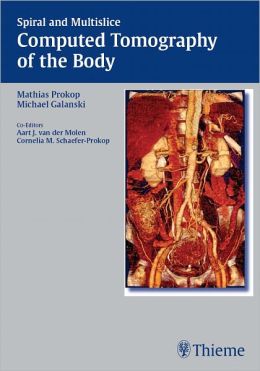-79%
Imaging Techniques for a Comprehensive Lower Extremity Assessment: A Thorough Guide
This comprehensive exploration delves into the realm of imaging techniques specifically designed to diagnose and evaluate a wide range of lower extremity injuries and conditions. From the hip to the toes, this guide provides an in-depth analysis of each region, highlighting the most prevalent issues and their corresponding imaging protocols.
Femoral Acetabular Impingement
Femoral acetabular impingement refers to a condition where the femur, or thigh bone, impinges on the acetabulum, or socket of the hip joint. This condition can cause pain, stiffness, and reduced range of motion. Imaging techniques such as X-rays, magnetic resonance imaging (MRI), and computed tomography (CT) can be utilized to diagnose and assess the severity of femoral acetabular impingement.
Soft Tissue Pathology around the Hip
Soft tissue pathology around the hip encompasses a spectrum of conditions affecting the muscles, tendons, ligaments, and other soft tissues surrounding the hip joint. These conditions can result from injuries or overuse and may manifest as pain, swelling, and limited mobility. Ultrasound and MRI are commonly employed imaging techniques for evaluating soft tissue pathology around the hip, providing detailed visualization of the affected structures.
Meniscal Injuries and Postoperative Imaging
Meniscal injuries involve damage to the meniscus, a cartilage structure within the knee that provides cushioning and stability. Imaging techniques, including MRI and arthroscopy, play a crucial role in diagnosing and assessing the severity of meniscal injuries. Additionally, postoperative imaging techniques, such as MRI, can be used to monitor the healing process and evaluate the outcome of meniscal repair procedures.
Neglected Corners of the Knee: Posterolateral and Posteromedial Corner Injuries
The neglected corners of the knee refer to the posterolateral and posteromedial corners, which are often overlooked in routine imaging protocols. Injuries to these corners can lead to instability and pain during certain movements. Advanced imaging techniques, such as MRI and 3D CT, provide a comprehensive assessment of the neglected corners of the knee, aiding in accurate diagnosis and treatment planning.
Extensor Mechanism from Top to Bottom
The extensor mechanism of the knee comprises the quadriceps muscles, patella (kneecap), and patellar tendon, which work together to extend the knee joint. Injuries to any component of the extensor mechanism can result in pain, swelling, and limited range of motion. Imaging techniques, such as X-rays, MRI, and ultrasound, can be used to diagnose and assess the extent of injuries to the extensor mechanism.
Cysts and Bursa around the Knee
Cysts and bursa are fluid-filled sacs that can form around the knee joint. While often asymptomatic, larger cysts and bursa can cause pain and swelling. Imaging techniques, such as ultrasound and MRI, can be used to visualize and characterize cysts and bursa, guiding appropriate treatment decisions.
Ligamentous Injuries of the Ankle and Foot
Ligamentous injuries of the ankle and foot are common occurrences, particularly among athletes and individuals who engage in high-impact activities. These injuries can affect various ligaments, leading to pain, instability, and difficulty walking. Imaging techniques, such as X-rays, MRI, and ultrasound, can be used to diagnose and assess the severity of ligamentous injuries in the ankle and foot, facilitating timely and effective treatment.
Medial Longitudinal Arch of the Foot
The medial longitudinal arch of the foot is a complex structure that provides support and stability during weight-bearing activities. Deviations from the normal arch, such as flatfoot or high-arch conditions, can lead to pain and discomfort. Imaging techniques, such as X-rays and CT, can be used to assess the alignment and integrity of the medial longitudinal arch, guiding appropriate management strategies.
Ankle Impingement Syndromes
Ankle impingement syndromes refer to conditions where surrounding structures impinge on the ankle joint, causing pain, swelling, and limited range of motion. The most common types of ankle impingement syndromes include anterior ankle impingement, posterior ankle impingement, and syndesmotic ankle impingement. Imaging techniques, such as X-rays, MRI, and CT, can be used to diagnose and assess the severity of ankle impingement syndromes, guiding appropriate treatment interventions.
Imaging of the Forefoot
The forefoot encompasses the structures distal to the ankle joint, including the metatarsals and toes. Various conditions can affect the forefoot, such as metatarsal stress fractures, bunions, hammertoes, and neuromas. Imaging techniques, such as X-rays and MRI, can be used to diagnose and assess the extent of forefoot conditions, facilitating appropriate treatment options.
Overuse Injuries of the Lower Extremity
Overuse injuries of the lower extremity are common among individuals who engage in repetitive or high-impact activities. These injuries typically involve inflammation of the tendons or muscles and can manifest as pain, swelling, and reduced range of motion. Imaging techniques, such as ultrasound and MRI, can be used to diagnose and assess the severity of overuse injuries, guiding appropriate rest, rehabilitation, and treatment protocols.
Imaging of Total Hip and Knee Arthroplasties
Total hip and knee arthroplasties are surgical procedures that involve replacing the damaged hip or knee joint with an artificial joint. Imaging techniques, such as X-rays, CT, and MRI, play a crucial role in pre- and post-operative assessment of total hip and knee arthroplasties. These techniques can be used to evaluate the positioning and alignment of the artificial joint, assess for complications, and monitor the long-term outcomes of the surgery.
Application of Advanced Imaging Techniques
Advanced imaging techniques, such as 3D CT and cone beam CT (CBCT), are increasingly being utilized in the evaluation of the lower extremity. These techniques provide detailed 3D representations of bones and soft tissues, enabling comprehensive assessment of complex injuries and conditions. For instance, 3D CT can be used to visualize the intricate anatomy of the knee, providing invaluable information for surgical planning and evaluation of ligamentous injuries.









Reviews
Clear filtersThere are no reviews yet.